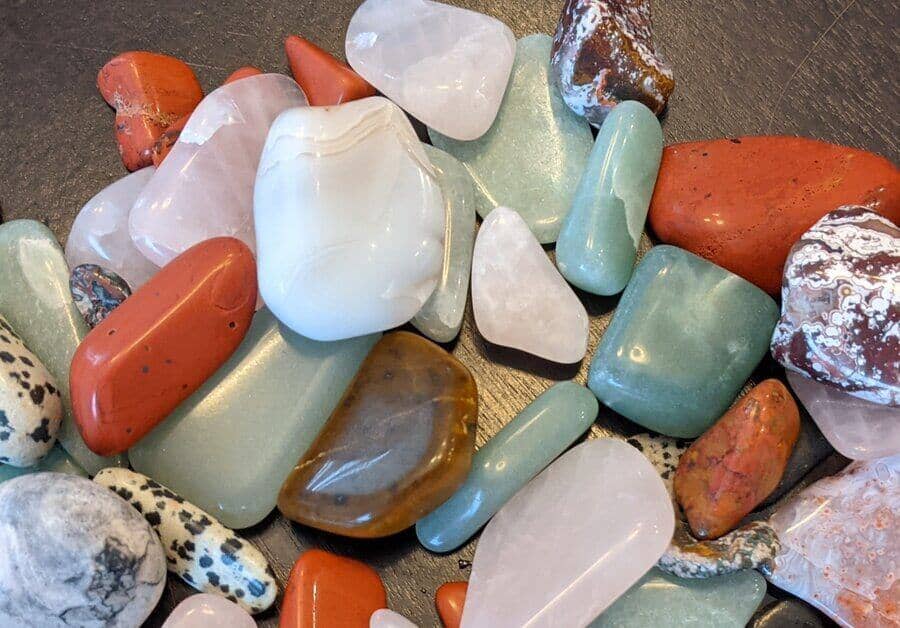
My daughter and I really enjoy tumbling rocks together, and after our first batch of rocks was complete we started to wonder what other types of rocks we could tumble. It would be nice if you could just throw any old rock into a rock tumbler and get great results, but that simply isn’t the case. I did a lot of reading and research and found out the best types of rocks to put in a rock tumbler.
The best rocks for tumbling are hard, dense, smooth rocks such as quartz, agate, jasper, tiger’s eye, and aventurine. Other popular tumbling rocks include obsidian, hematite, petrified wood, feldspars, dalmatian stone, and moonstone. Avoid tumbling rocks with a gritty texture or that are too soft.
All of those rocks will work well in a rock tumbler and are therefore some of the most commonly used. I’ll get into what makes these rocks perfect for rock tumbling and why other rock types don’t perform well in a tumbler. There are also plenty of exceptions and tricks you can use to tumble less common rocks and other materials.
Best Rocks for Tumbling
| Name | Hardness | Color(s) |
|---|---|---|
| Quartz | 7 | White to clear |
| Agate | 6.5-7 | Varied: banded brown, white, pink, yellow, red |
| Jasper | 6.5-7 | Varied: brown, yellow, red, orange, green |
| Sodalite | 5.5-6 | Most commonly blue with white veins |
| Rose Quartz | 7 | Light Pink |
| Amethyst | 7 | Varying shades of purple & violet |
| Tiger’s Eye | 7 | Golden to red-brown, banded/fibrous |
| Aventurine | 6.5-7 | Most commonly seafoam green |
Quartz
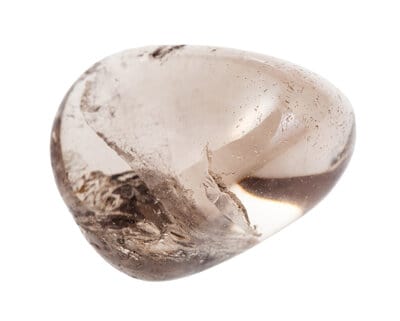
Quartz is the perfect rock to tumble, which is a good thing because it is the most common mineral in the Earth’s crust. It comes in many varieties and colors, so you’ll likely never tire of tumbling it. In fact, almost all of the other rocks on this list are some variety of quartz. It’s the perfect hardness for tumbling, and its white to translucent color cleans up really nicely in a tumbler.
Agate
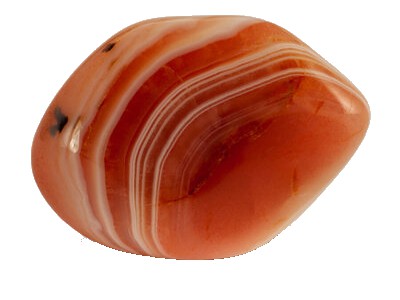
Agates are one of the most popular types of rocks used by tumblers everywhere. They are considered a semiprecious gemstone and are known for their gorgeous banded colors. A variety of chalcedony (itself a variety of microcrystalline quartz), they often have beautiful red or orange colors and are usually translucent. These attributes make it one of the most fun rocks to tumble.
Jasper
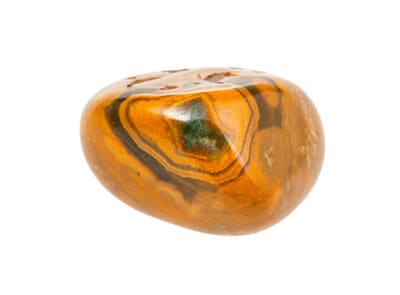
Jasper is very similar to agate, and is another super popular tumbling rock. Another type of chalcedony (itself a variety of microcrystalline quartz), it comes in a wide variety of colors including brown, green, red, orange, and yellow. Unlike agate it is completely opaque, but it polishes just as well and makes for a great rock to tumble.
Sodalite
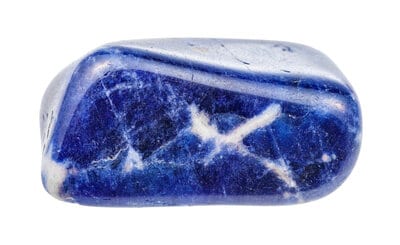
Sodalite is an absolutely beautiful rock and is one of my personal favorites to tumble. It has a rich royal blue color and usually has prominent white veins. It’s a little softer than quartz but is still right in the prime hardness range for tumbling. Sodalite is a prime candidate for tumbling, and as an added bonus many samples will fluoresce under UV light.
Rose Quartz
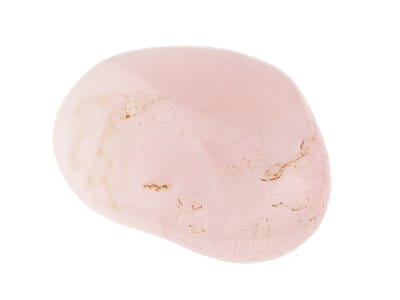
Rose quartz is a unique variety of quartz that has a distinct pink color. No coincidentally, this is one of my daughter’s favorite types of rock to tumble! The pink color is a result of microcrystalline inclusions of the mineral dumortierite. Rose quartz is often translucent to transparent, makin the finished tumbling results a very pretty sight to see.
Amethyst
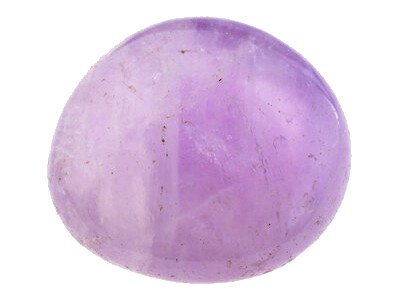
Another variety of quartz, amethyst is an extremely popular rock type for tumbling enthusiasts. Just about everyone is familiar with the beautiful deep purple and violet colors that come about irradiation and impurities in the quartz such as iron. The finished product at the end of tumbling is gorgeous since the purple stone is translucent and polishes extremely well.
Tiger’s Eye
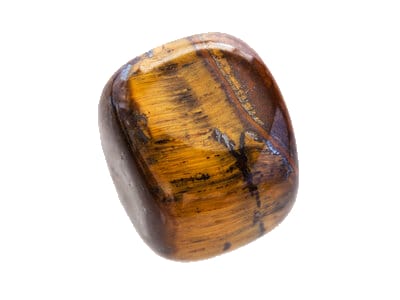
Tiger’s Eye is one of the coolest rocks on this list because of its unique coloring and banded/fibrous appearance. This rock is yet another quartz variant that occurs when crocidolite is replaced by silica. The cool play of the light that happens when you view tiger’s eye from different angles is called ‘chatoyancy’ and it is on full display after a specimen has been run through a rock tumbler.
Aventurine
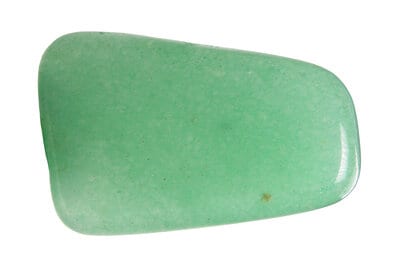
I tumbled this beautiful type of rock before I even knew what it was called, and to be honest I didn’t even care much what its name was because it came out so beautifully. Yet another form of quartz, it comes in several colors including orange, brown, yellow, and blue, but by far the most common color is green. Most of the specimens I’ve seen are a very pleasant seafoam green color, and they come out of the rock tumbler looking great.
What Makes Rocks Good For Tumbling
Choosing the right rocks to tumble is probably the single most important step in rock tumbling. Most rocks you’ll find in nature are not suitable to rock tumbling and it can be a big, disappointing waste of time to attempt using them. Additionally, if even one of the rocks you put into your tumbling batch doesn’t meet acceptable standards it will almost certainly ruin the entire batch!
If you’re looking for some great tumbling rough, I’ll point you to my recommendations page. I was very happy with the quality and variety of rocks I purchased from Amazon.
You can’t tumble every type of rock. There are four criteria that rocks should meet in order to be included in your next tumbling batch. If all of your rocks (or ‘rough’) meet these standards then you’ll have a much higher chance of success.
Hardness Between 6 and 8
Most rocks that hobbyists tumble are relatively hard. They will typically be anywhere from a 6 to an 8 on Mohs harness scale (see below). If you’re unfamiliar with this scale, it runs from 1 to 10 and ranks minerals based on how hard they are. Talc is a 1 and is the softest mineral on the scale, while diamond is the hardest at 10.
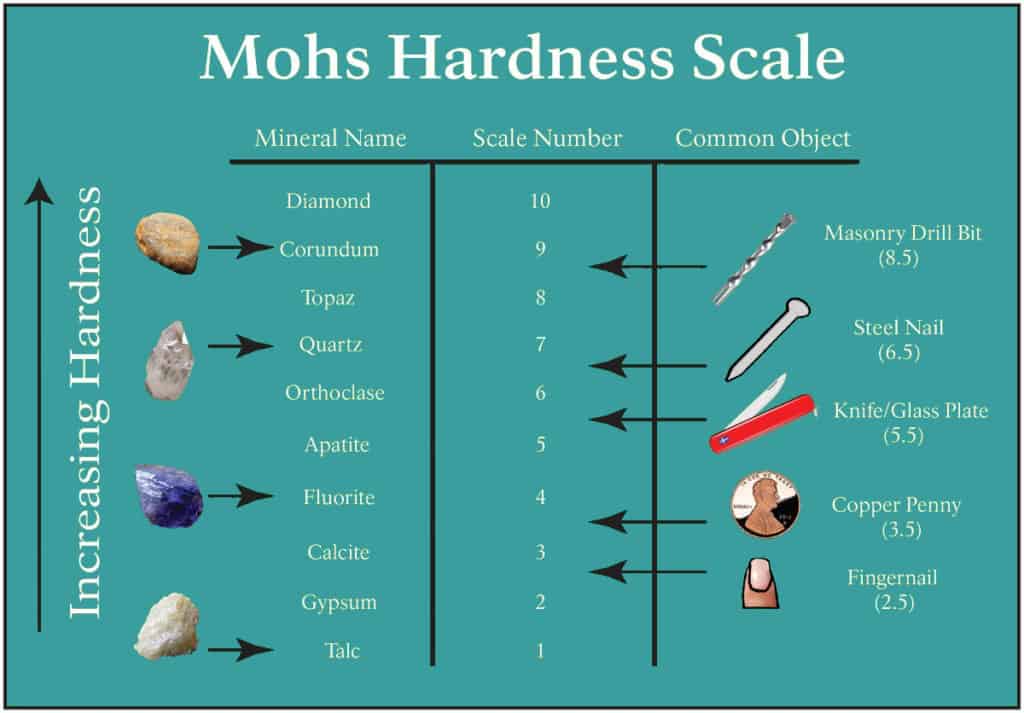
The best rocks for tumbling will rank between 6 and 8 hardness, with the vast majority of them being different varieties of quartz which has a hardness of 7. It’s important that all of your rough have a similar hardness, otherwise the softer rocks will get destroyed by the harder ones.
Differing hardness between rocks will also necessitate different tumbling times. Harder rocks will need to work longer (especially in step 1) because they are more resistant to abrasion.
Not Too Soft
While it is possible to tumble some softer rocks it isn’t advisable for beginners, and if you do attempt it make sure that there are no harder rocks mixed in. The harder rocks will completely destroy the softer rocks and there will be nothing left of them. Any rocks below about a 6 hardness are also not likely to take a good polish. You will be able to round and smooth them pretty easily but they won’t end up nice and shiny at the end.
Not Too Hard
Very hard rocks such as corundum and ruby are also not great choices because they will require specialized grit and a lot of time in the tumbler. If you do attempt this make sure you’re not using gem-quality samples! Since these hard rocks take so much more time in the tumbler I would definitely recommend investing in a vibratory tumbler which can easily cut tumbling time in half. I detailed the differences between rotary and vibratory tumblers here.
Smooth Texture
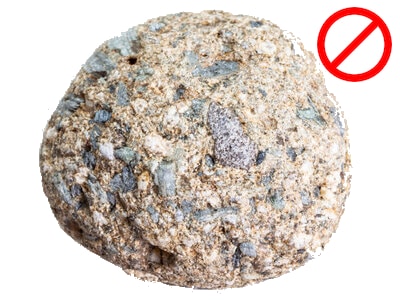
The texture of a rock is critically important when it comes to rock tumbling. Any rock that has a grainy, gritty, or sandy texture should never be used as tumbling rough.
Good tumbling rough will consist only of rocks with a smooth, non-granular texture. When the rocks are broken the surfaces should be smooth to the touch.
You can probably tell if the texture is suitable just by looking at the rock and checking for any visible granularity. A good tumbling rock will be microcrystalline with no visible grains. Another good way to tell is to rub the rocks together and see if any small grains are produced. If not, then the texture is probably suitable.
If you attempt to tumble a rock with a gritty or granular texture then you’re going to end up with bad results. The rock will disintegrate into little bits of grit which will destroy every other rock in the barrel. Those bits of grit will act just like the tumbling grit you add in each step, except they are the wrong size so they’ll just scratch everything up and leave it looking dull.
High Density
When I say ‘density’ here I’m not referring to the matrix density of a rock, but rather I’m talking about any porosity or visible voids. It’s important not to add any porous rocks to your tumbling rough because those pores make for perfect little traps for tumbling grit.
If you put these rocks with pores, voids, or pits into your batch of tumbling rocks you probably won’t notice any problems in the first or second steps, but you’ll definitely run into problems in the pre-polish, polish, and burnishing stages.
The problem is that the pores trap grit from each step and carry it on to the next steps. If even a few pieces of larger grit make it into the polishing stage then you’ll end up getting unsightly gouges in your otherwise nicely polished rocks. There is almost no amount of rinsing or cleaning you can do avoid this carryover of grit if your rock has a bunch of pores, so it’s best just to avoid them entirely.
Lack of Fractures
It’s important to check over your tumbling rough for any rocks that have noticeable fractures. If you find any rocks that have visible cracks or fractures make sure to remove them from the batch. Or, even better, you can break those rocks up along the fractures and tumble the pieces.
Tip: Break up any fractured rocks along their visible fractures before tumbling.
If you try to tumble a fractured rock it can end up breaking apart in the barrel, which can have disastrous consequences for the other rocks inside. When the rock breaks apart it will have sharp edges that will end up scratching up the other rocks. This can be particularly bad if it happens in the last few tumbling steps because there isn’t enough time left to fix the damage.
Proper Size
Even if your rocks meet all the other criteria they need to be the right size. Ideally your tumbling rough will consist of rocks that are between 1/2″ and 1-1/2″ in size. If they’re any bigger than that they are probably too large for most tumblers and won’t get proper tumbling action, while anything smaller will probably just get ground up entirely over the course of the entire tumbling process.
It’s also important to have a nice mix of rock sizes in your rough. The best rough will have a nice distribution of differently sized rocks. This distribution creates nicer tumbling action in the barrel and increases the number of contact surfaces between the rocks, making the tumbling more efficient. If you don’t have an adequate size distribution of rocks then you can always add ceramic tumbling media, which I covered in depth in this article.
How to Test if a Rock Can be Tumbled
Sometimes you might have some rocks that you’re considering tumbling but you aren’t sure what they are or what they’re called. This makes it more difficult to know if they’re suitable for tumbling because you can’t just look up the name of the rock and ask Google. Luckily you can do a short series of simple tests that will let you know if your rocks make for good tumbling rough.
Test for Smooth Texture
This is probably the easiest test you’ll need to run, but it’s a very important one. Just rub your fingers over the surface of the rock and feel for a gritty or sandy texture. Anything like sandstone or shale is definitely not going to work.
You can probably tell if the texture is smooth enough just by looking at it. You’re looking for a surface that is pretty smooth without any visible grains. Great tumbling rocks are microcrystalline, meaning that all of the crystals are too small to see.
Another way to test the texture is just to rub a couple rocks together. If any sandy or gritty material falls off then you don’t want to put it in the barrel with the rest of your rough.
Test for Hardness
Testing the hardness of a rock or mineral is one of the most basic and important parts of the identification process and it will help immensely in evaluating whether or not a rock is suitable for tumbling. For beginners I recommend that you stick with rocks in the 6 to 8 hardness range, but the most important thing is to only tumble rocks of similar hardness together.
In order to test that a rock is above a 6 hardness you’ll need a steel knife or steel file. Steel has a hardness of around 6 so it makes for a good testing medium. Rub the rock back and forth firmly on the steel and look for a ‘streak’ – part of the rock rubbing off onto the steel. If nothing shows up then it’s harder than the steel and passes the test. This YouTube video shows how to test the hardness of your rocks.
There are very few minerals that are harder than an 8 on the Mohs hardness scale, so it’s pretty safe to assume that whatever rock you’re testing is not too hard. If you had a mineral like corundum or diamond you’d probably be aware of it. If you really want to test, try scratching it against a known piece of quartz and see if the quartz leaves a streak on your rock. If it does then you’ve found something very hard that probably shouldn’t be tumbled with your other rough.
Test for Density
This is another test that can most likely just be done by eye. If your rock has a bunch of pock marks, cracks, pores, or crevices then you should probably shouldn’t try tumbling it.
If you aren’t sure then I do have a test you can try. Dunk the rock in some water and leave it for about 10 seconds, then remove it. Then try drying it off with a paper towel. If there are parts of the rock that still retain water because the paper towel couldn’t reach or the capillary pressure keeps the water in, then the rock isn’t dense enough. You need to be able to thoroughly clean the rocks between tumbling steps for the best results.
Less Common Rocks for Tumbling
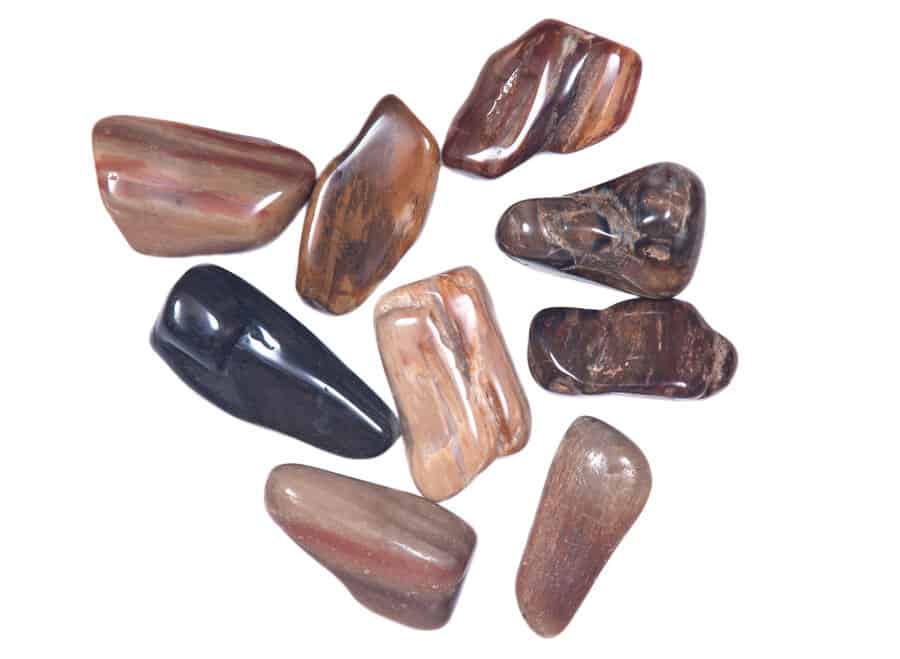
The rocks I listed above are far from the only rock types that you can tumble. There are many, many other rocks that will do well in a tumbler, and even more that will turn out great if you take the time to learn a dedicated tumbling process for that rock type. While this list is not exhaustive, here are some less common but still popular rocks you can tumble:
| Name | Hardness | Color(s) |
|---|---|---|
| Hematite | 5.5-6.5 | Most Commonly silver, gray, and black |
| Petrified Wood | 7-8 | Varied: Brown, yellow, red, blue, orange |
| Granite | 2.5-7 | Varied: Pink, white, gray, black, red, blue |
| Obsidian | 5-5.5 | Most commonly black |
| Moonstone | 6-6.5 | Varied: Gray, white, orange, pink, blue, etc |
| Amazonite | 6-6.5 | Most commonly green. Also gray, blue |
| Lepidolite | 2.5-3 | Varied: Pink, purple, red, gray, yellow |
| Malachite | 3.5-4 | Green, varying shades |
| Sunstone | 6-6.5 | Varied: Yellow, orange, red |
| Labradorite | 6-6.5 | Varied: Purple, blue, gray, yellow, red, etc |
| Dalmatian Stone | 6-6.5 | White matrix with black spots |
Hematite
Hematite is an awesome rock for tumbling because when it’s completely polished it looks like a mirror. You can see your reflection when it’s done!. It reminds me of the famous ‘Bean’ sculpture in Chicago. It’s hard enough to tumble well and has a good weight to it due to the high iron content. It does come in other colors like red and black and even comes in beautiful iridescent varieties. A word of advice – tumble hematite alone because it can rust the water in the tumbler and stain your other rocks.
Petrified Wood
Petrified wood can make for some absolutely gorgeous rocks when tumbled. It tends to be a little harder than most other common tumbling rough, so be careful what you mix it with. The natural grains and ring patterns preserved in petrified wood really stand out when tumbled, and of course all the natural colors that come with the petrification process make each piece really stand out.
Granite
There are countless varieties of granite in the world and they all have different compositions. Because it contains several minerals of varying hardness it’s a difficult rock to tumble. Any micas in the granite are much softer than the surrounding feldspars and quartz, so they will preferentially wear and can create a very cool ‘golf ball’ or ‘orange peel’ effect. While granite is tricky to tumble it’s definitely doable and can produce some unique and surprising results.
Obsidian
Obsidian makes for an interesting tumbling rock because it already has a very smooth, glassy texture, but if done correctly it will lose those famous sharp edges and produce a very cool looking smooth, incredibly shiny finished product. Most obsidian is black but sometimes you’ll find it in all red or a mixture of the two. Obsidian is a little softer than most tumbling rocks so be careful about what else you tumble it with. In fact, it would probably be best to do a batch of nothing but obsidian.
Moonstone
Moonstone is a type of gemstone that falls in the feldspar family, and its hardness is right in the sweet spot making it a great rock for tumbling. It has long been used for jewelry because of its nice color varieties and opalescent luster. Be careful when tumbling moonstone, though, because I’ve found that it’s especially prone to cracking in the tumbler. Make sure to use some sort of buffer such as ceramic or plastic media to dampen the impact of the tumbling action.
Amazonite
This gorgeous minty green rock, also known as ‘Amazonstone,’ gets its name from the Amazon river where it was originally discovered. It is hard enough to tumble with most other common tumbling rocks, making it a good addition to most batches. I’m personally not much of a fan with the look of tumbled amazonite, but nevertheless it is popular choice with many tumbling hobbyists. If you’re looking for a minty green colored rock then this is definitely the way to go.
Lepidolite
Lepidolite is a very pretty variety of mica, which means that at a hardness of 2.5 to 3 it’s a lot softer than most other tumbling rough. It also tends to be really crumbly, falling apart very easily in a tumbler. Despite these difficulties, some people still like to tumble it because of its beautiful colors (or maybe they just like a challenge). I’d suggest using a vibratory tumbler and lots of media in order to reduce the damage done to the rock in each phase.
Malachite
Malachite is another rock type that’s a little too soft to tumble with more traditional rough. It gets its trademark green color from its copper content, which is also largely responsible for how soft it is. Still, malachite has long been a popular gemstone and it really does look great if you can manage to tumble it well. I’d recommend tumbling a batch of malachite on its own and for less time than usual in order to prevent it from getting eaten up in the barrel.
Sunstone
Sunstone is a type of feldspar that comes in really nice color varieties including yellow, red, green, and blue. Because it can be translucent and comes in those beautiful colors it can be a good tumbling option, but I’d consider it to be a more advanced tumbling rock. It tends to chip and break during the tumbling process which can be frustrating. I’d recommend using a vibratory tumbler for this rock to minimize the chipping and breakage.
Labradorite
Labradorite is another rock in the feldspar family which means that it has a great hardness for tumbling. Like sunstone it also tends to chip and break pretty easily in a rotary tumbler so I’d recommend either using a vibratory tumbler or a lot of plastic media to cushion the rocks. Labradorite looks really awesome once it’s tumbled, showing off an opalescent, vitreous luster in amazing deep blue, grey, and green colors.
Dalmation Stone
Dalmation stones are one my daughter’s favorite rocks to tumble because they (obviously) remind her of the dogs. Often called ‘Dalmation Jasper’ it isn’t a jasper at all but rather a mixture of albite, quartz, and amphibole. All of these minerals have a similar hardness which makes it a great multi-mineral rock to tumble. It is also very commonly dyed since the white matrix readily absorbs dye, creating a really cool looking rock.
